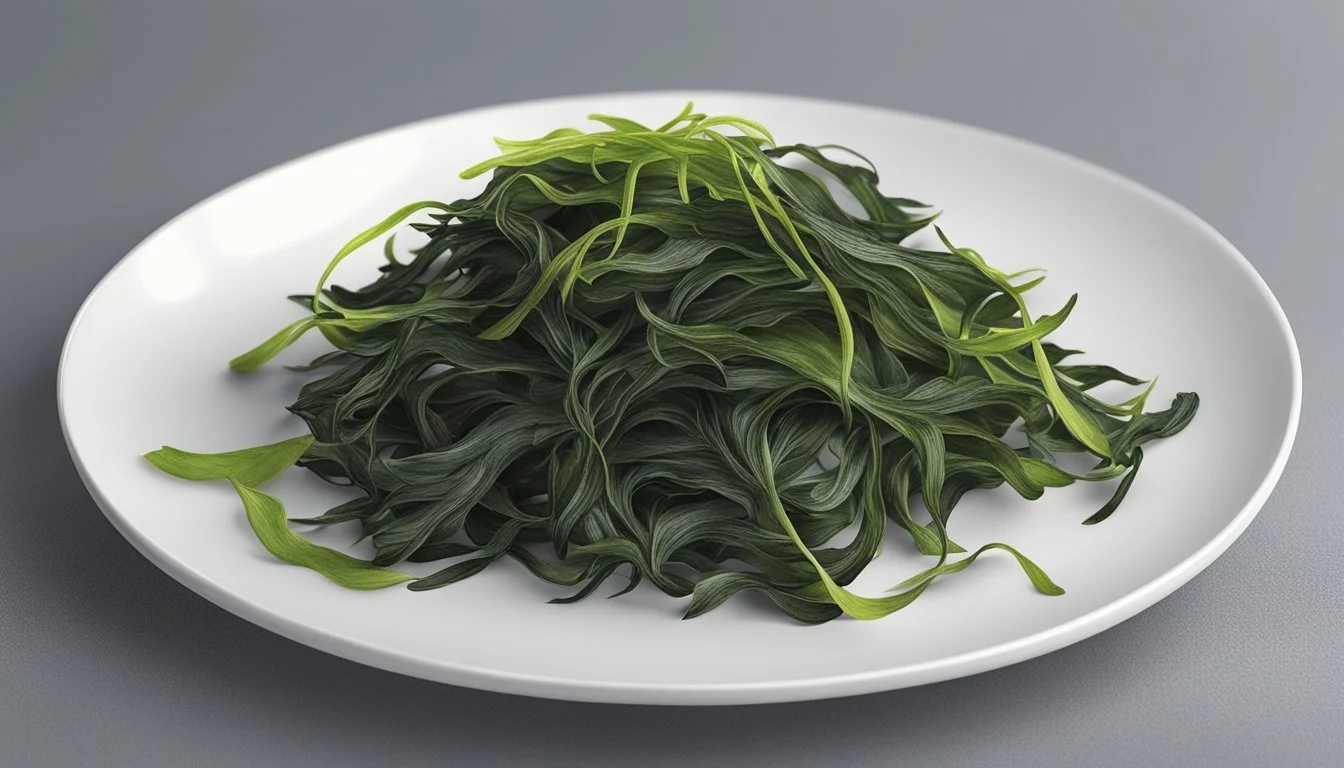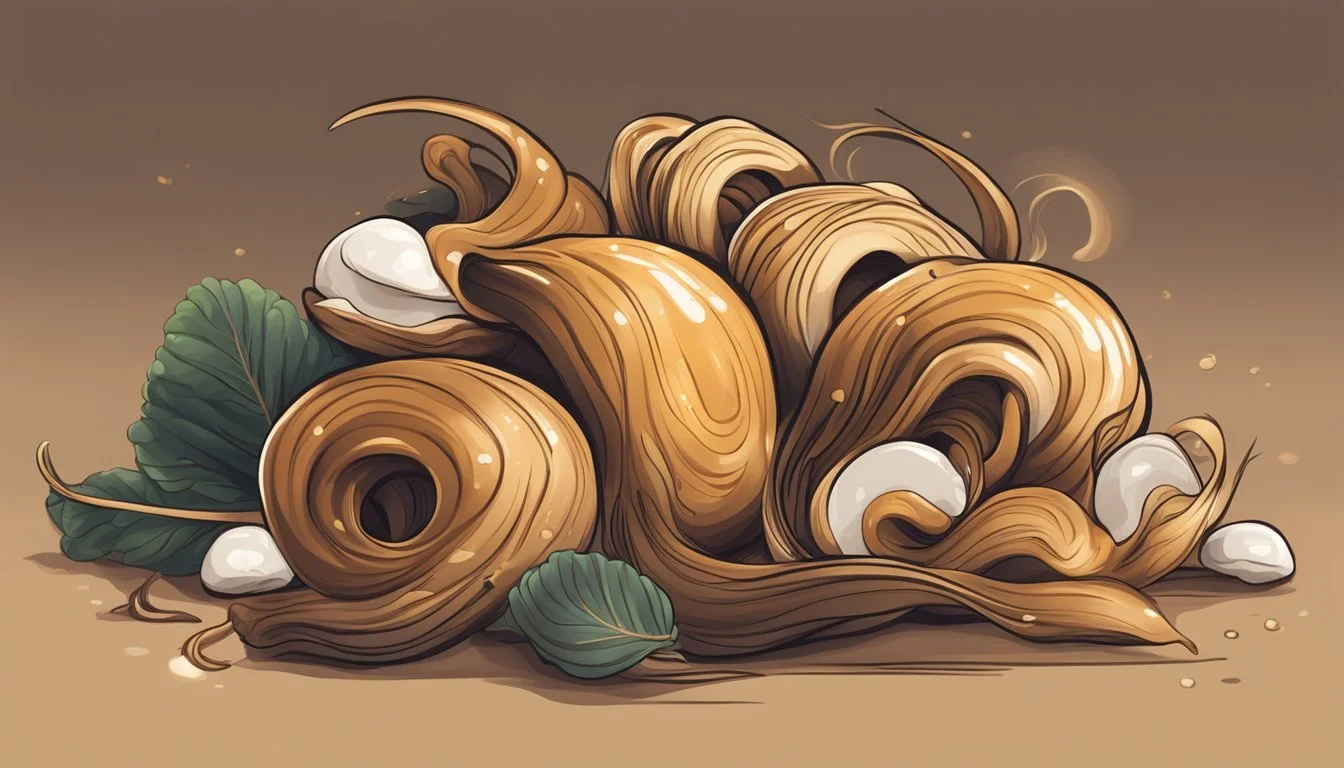Does Arame Go Bad?
Shelf Life and Storage Tips
Arame, a type of edible seaweed popular in Japanese cuisine, does have a shelf life, like all other food items. Stored properly, dried arame can last for a long time, often up to several years. The key to prolonging its shelf life lies in the way it is stored—keeping it in a cool, dry place is essential.
Despite its impressive longevity, arame can still go bad if exposed to moisture or direct sunlight. Signs of spoilage include an off smell, discoloration, or a slimy texture. If any of these are noticed, it’s best to discard the arame to avoid potential health risks.
For those who purchase arame in bulk, dividing it into smaller portions and using airtight containers can help maintain its quality. Using these storage tips, one can enjoy the nutritional benefits of arame for an extended period.
Understanding Arame
Arame is a type of seaweed known for its health benefits, rich nutritional profile, and versatility in cooking. This section explores what arame is, its nutritional content, and how it can be used in various dishes.
Defining Arame
Arame is a type of marine algae belonging to the species Eisenia bicyclis. It is predominantly harvested from the coasts of Japan. Known for its mild, sweet flavor and dark brown color, arame is often used in Japanese cuisine. The seaweed is usually sold dried, which allows for extended storage. When soaked, it rehydrates and expands, making it a versatile ingredient in many dishes.
Nutritional Profile
Arame is highly nutritious, providing various essential vitamins and minerals. It is especially rich in iodine, which supports thyroid function and prevents goiter.
Nutrient Amount per 10g Serving % Daily Value Riboflavin 0.07 mg 5% Sodium 125 mg 5% Potassium 131 mg 3% Iodine 4,000 mcg 26 times more than the DV
Beyond iodine, arame contains small amounts of riboflavin and potassium, contributing to overall health.
Culinary Uses
In culinary applications, arame is used in various dishes due to its subtle flavor and chewy texture. It pairs well with other ingredients and can be added to soups, salads, and stir-fries.
Cooking Method Example:
Rehydrate: Soak dried arame in warm water for about 5-10 minutes.
Sauté: Heat sesame oil in a skillet, add onions, and sauté until translucent.
Cook: Add rehydrated arame, mix with other vegetables, and simmer until tender.
Arame is also featured in some hair and skin care products, leveraging its rich mineral content. This versatility in both culinary and non-culinary applications makes arame a valuable seaweed variety.
Freshness and Quality Indicators
Recognizing signs of spoilage in arame is essential to maintain its quality and ensure it is safe to consume. Examining its appearance, texture, and odor will provide clear indicators of its freshness.
Appearance and Color
Arame should have a deep brown or dark greenish color. This suggests it is fresh and high-quality. Watch for any discoloration or mold growth.
Signs such as white spots or a dull color can indicate that the arame is beginning to deteriorate. Presence of other colors could mean contamination or spoilage.
Regular visual checks can help in identifying any early signs of quality degradation. If unsure, discard the product to avoid health risks.
Texture Assessment
When fresh, arame has a slightly firm and pliable texture. It should not be overly dry or brittle. If it feels excessively hard or crispy, it may be old or improperly stored.
Arame stored for longer periods should be carefully checked for moisture buildup. It should remain flexible without feeling sticky or slimy.
Remember, maintaining proper storage can help preserve its texture and prolong its shelf life.
Odor and Flavor Profile
Fresh arame has a mild, pleasant odor reminiscent of the ocean. A sour smell or off-odor is a clear sign of spoilage and it should be discarded immediately.
Flavor-wise, arame should have a light but distinct seaweed taste. Any bitterness or unusual flavors can indicate it has gone bad.
Tasting a small amount can be a final check to ensure its quality. Always prioritize sensory checks to avoid consuming spoiled arame.
Proper Storage Techniques
Proper storage of arame is essential to maintain its quality and extend its shelf life. Focusing on airtight containers and temperature control can protect arame from moisture and heat.
Airtight Containers
Using airtight containers is paramount when storing arame. Containers should be sealed completely to prevent exposure to moisture and humidity, which can cause the seaweed to spoil.
Glass jars or plastic containers with secure lids are ideal choices. These materials help keep arame dry and free from contaminants. Additionally, labeling containers with the purchase date can help keep track of freshness.
Vacuum sealing is another excellent method. It removes air, reducing oxidation and preserving the flavor and nutritional value.
Temperature Control
Temperature control is another key factor in preserving arame. Storing arame in a cool, dry place is crucial. Room temperature is typically suitable, but it should be kept away from heat sources and direct sunlight.
For extended storage, keeping arame in the refrigerator can be beneficial. The cool temperature helps prevent the growth of mold and bacteria, maintaining the seaweed's freshness. Ensure it is in an airtight container even in the fridge to protect it from moisture.
Avoid storing arame in places with high humidity as this can accelerate spoilage.
Shelf Life of Arame
Dried arame, a type of seaweed, can enjoy a substantial shelf life when stored correctly. Key factors include proper storage conditions and awareness of expiration dates.
Expected Shelf Life
Dried arame should be stored in a cool, dry place away from direct sunlight and moisture.
When kept under these conditions, the shelf life can extend from 6 to 9 months. Storing arame in airtight containers further protects it from humidity and temperature fluctuations.
Most dried arame packages come with a best-by date. While the quality may decline slightly after this date, properly stored arame remains safe to consume even past its labeled expiration date. Always check for any signs of spoilage, such as odor or visible mold, to ensure it is still good to use.
No preservatives are typically added to dried arame, which can affect longevity. Proper handling and storage play crucial roles in maintaining its quality.
Signs of Spoilage
Arame, like any other food item, can go bad over time. Recognizing when it's spoiled is crucial to avoid potential health risks. Key signs of spoilage in arame can include visual indicators, textural changes, and unpleasant odors.
Visual Indicators
Visual signs are often the first clue that arame has spoiled. Discoloration is a common indicator, with arame potentially shifting from its normal dark brown to lighter shades, or even developing black specks.
Mold is another sign to watch for. Any presence of white, green, or blue mold on the surface means the arame should be discarded immediately. Keeping a close eye on these visual changes can help determine if the arame is still safe to consume.
Textural Changes
The texture of arame can also change when it spoils. Fresh arame typically has a slightly firm and pliable texture. If the arame feels unusually lumpy or slimy, it is likely no longer good to eat.
Softening of the arame to the point where it breaks apart too easily can also be a red flag. Monitor the texture closely, as significant changes can indicate that the arame is no longer fresh and should not be consumed.
Unpleasant Odors
Smell is a crucial factor in identifying spoiled arame. Arame should have a mild, ocean-like scent. If the arame emits an off-odor or any kind of unpleasant odor, this is a strong sign that it has gone bad.
Sometimes the smell can be sour or musty, indicating bacterial growth. Rely on your sense of smell to help determine the freshness of the arame and avoid consuming arame with any unexpected or foul odors.
Handling Spoiled Arame
Proper handling of spoiled arame is crucial for maintaining safety and hygiene in the kitchen. Here, we cover key steps on when to discard it and how to properly dispose of it.
When to Discard
Detecting spoiled arame early helps prevent potential health risks.
Signs of Spoilage: Look for signs such as an off-putting smell, changes in texture, or mold growth. Spoiled arame may appear slimy or discolored.
Best Practices: Compare the appearance and smell to fresh arame. If there is any doubt about its quality, it's safer to discard it.
Ignoring these signs can be dangerous. Spoiled arame contains harmful bacteria that can cause food poisoning. Err on the side of caution to avoid potential risks.
Disposal Recommendations
Disposing of spoiled arame properly ensures environmental responsibility.
Remove from Packaging: As a first step, always remove the spoiled arame from its packaging. This helps avoid cross-contamination with other foods.
Sealed Bags: Place the spoiled arame in a sealed, airtight bag to contain any unpleasant odors and prevent bacteria spread.
Garbage Disposal: Dispose of the bagged arame in an outside trash bin rather than an indoor one. This helps keep your kitchen free from harmful bacteria and unpleasant smells.
Avoid flushing spoiled arame down the drain as it can cause plumbing issues. Proper disposal ensures the safety of your kitchen environment and the community around you.








